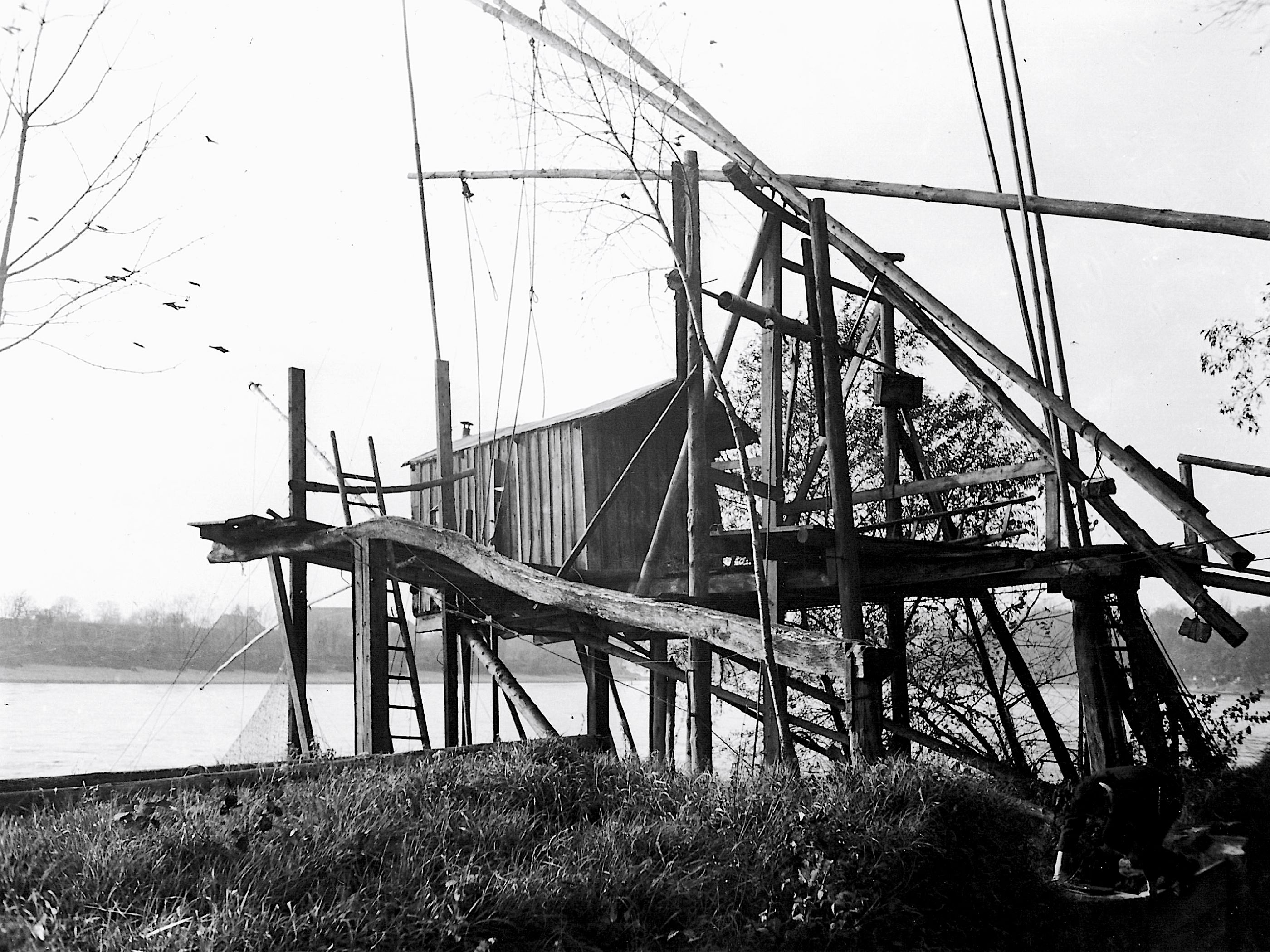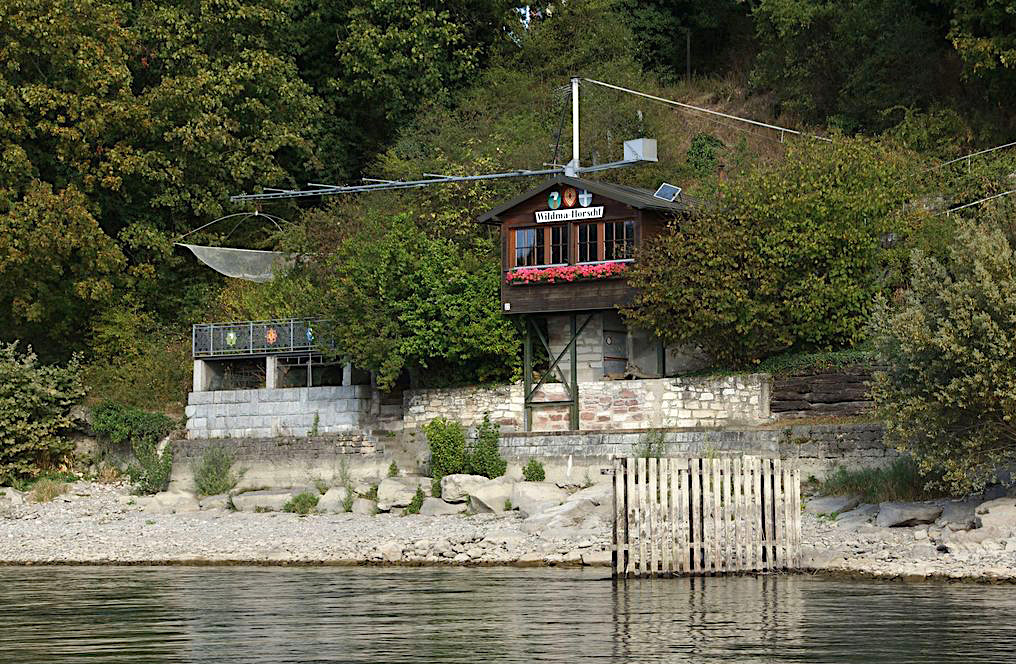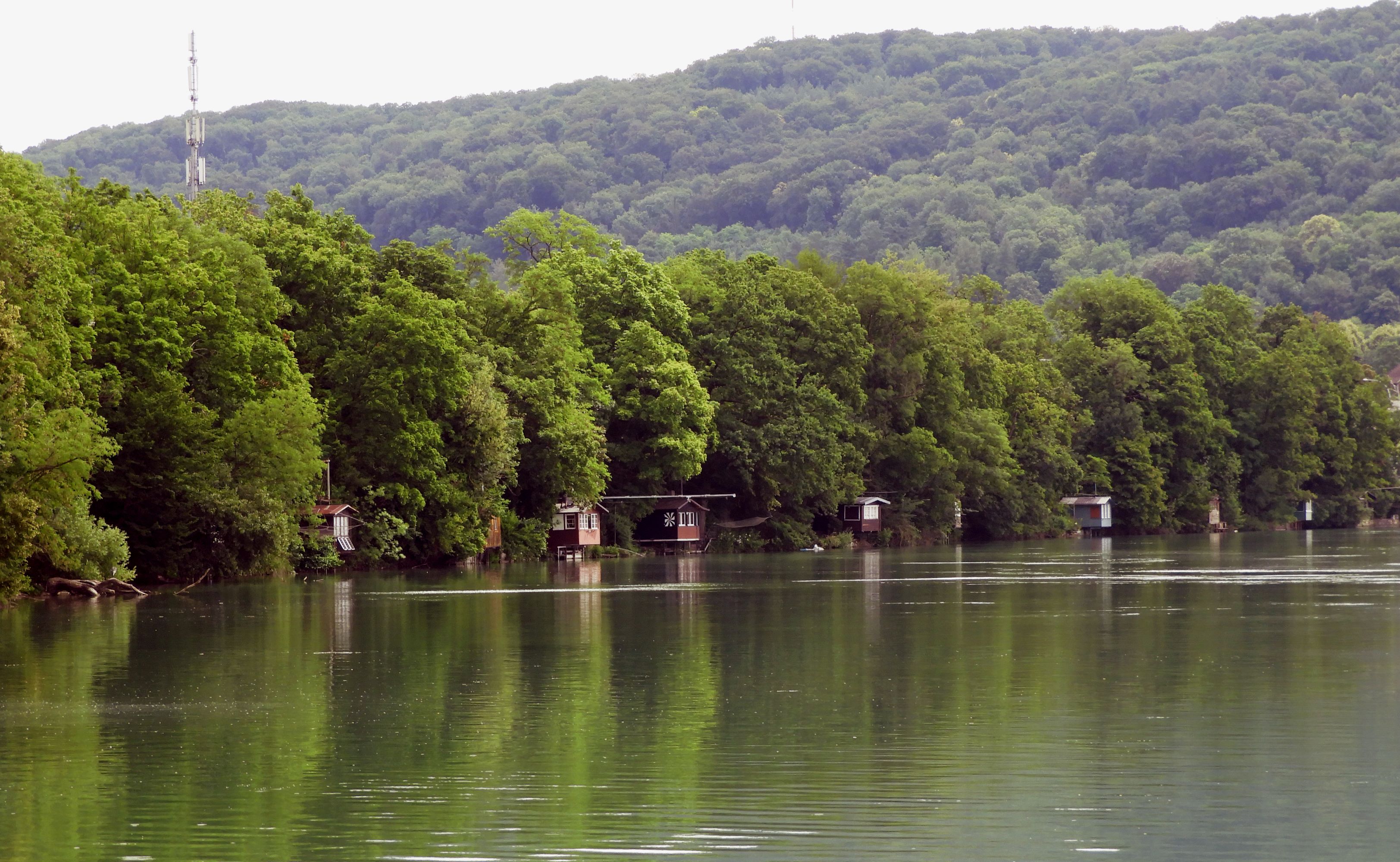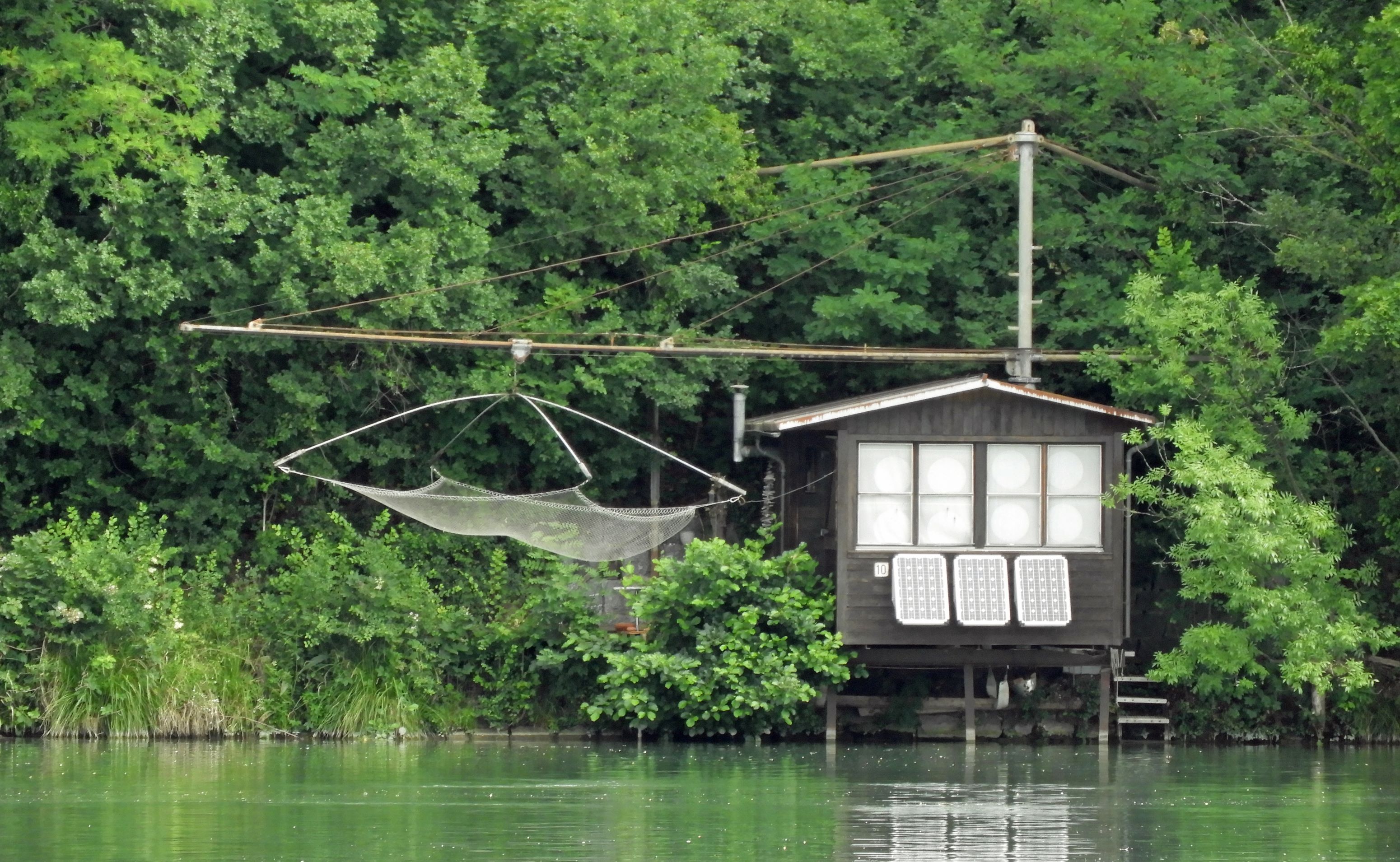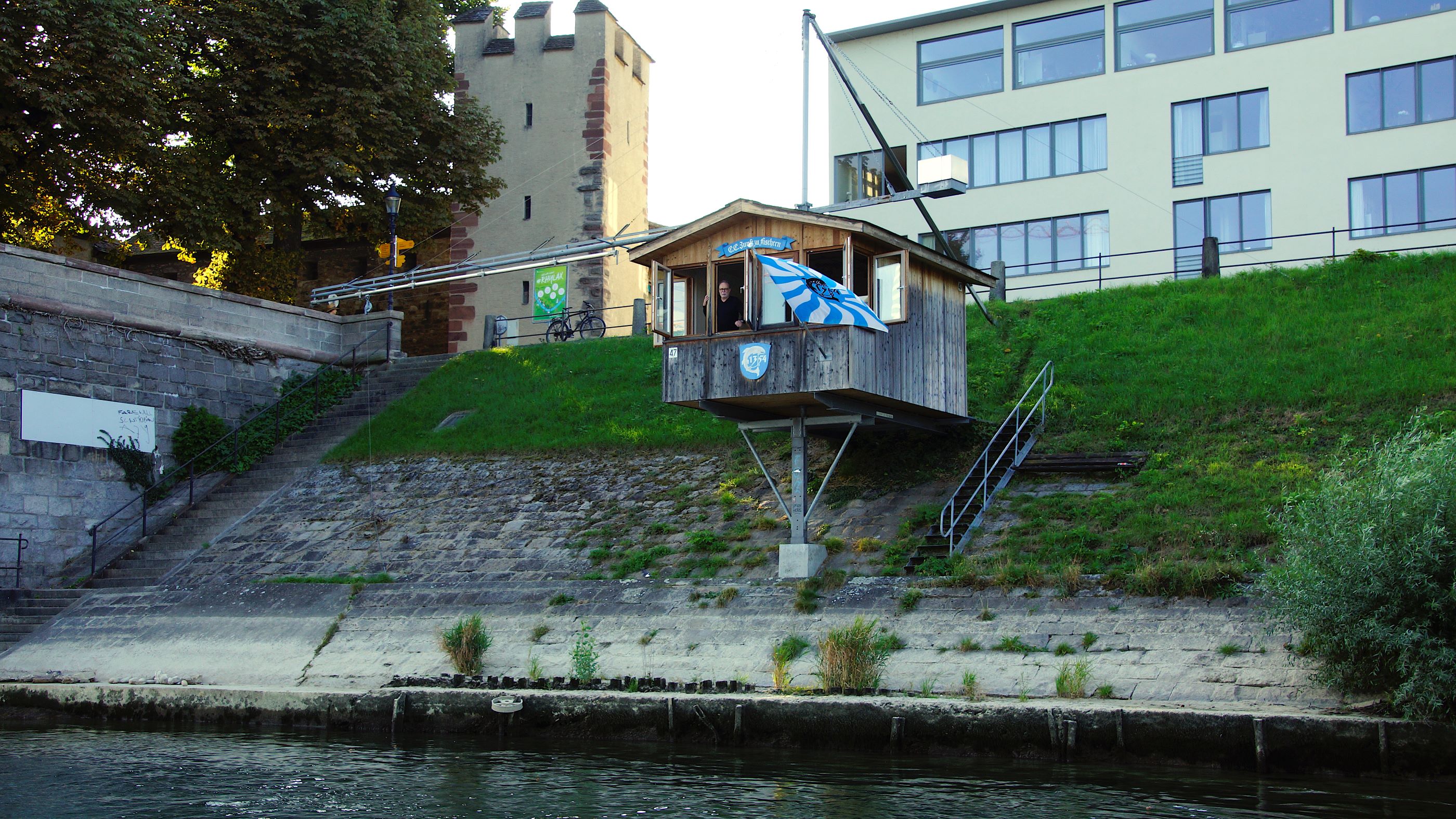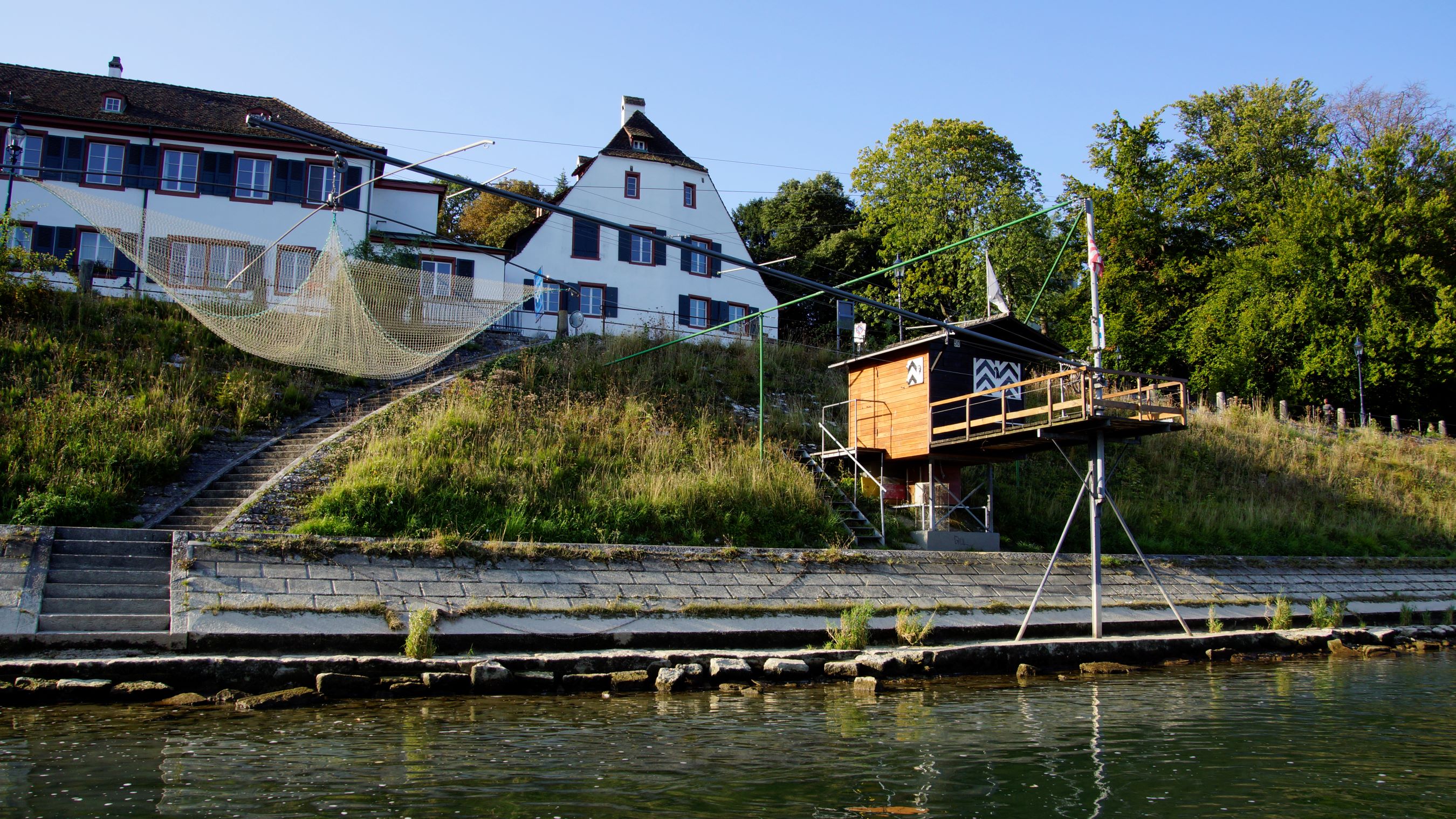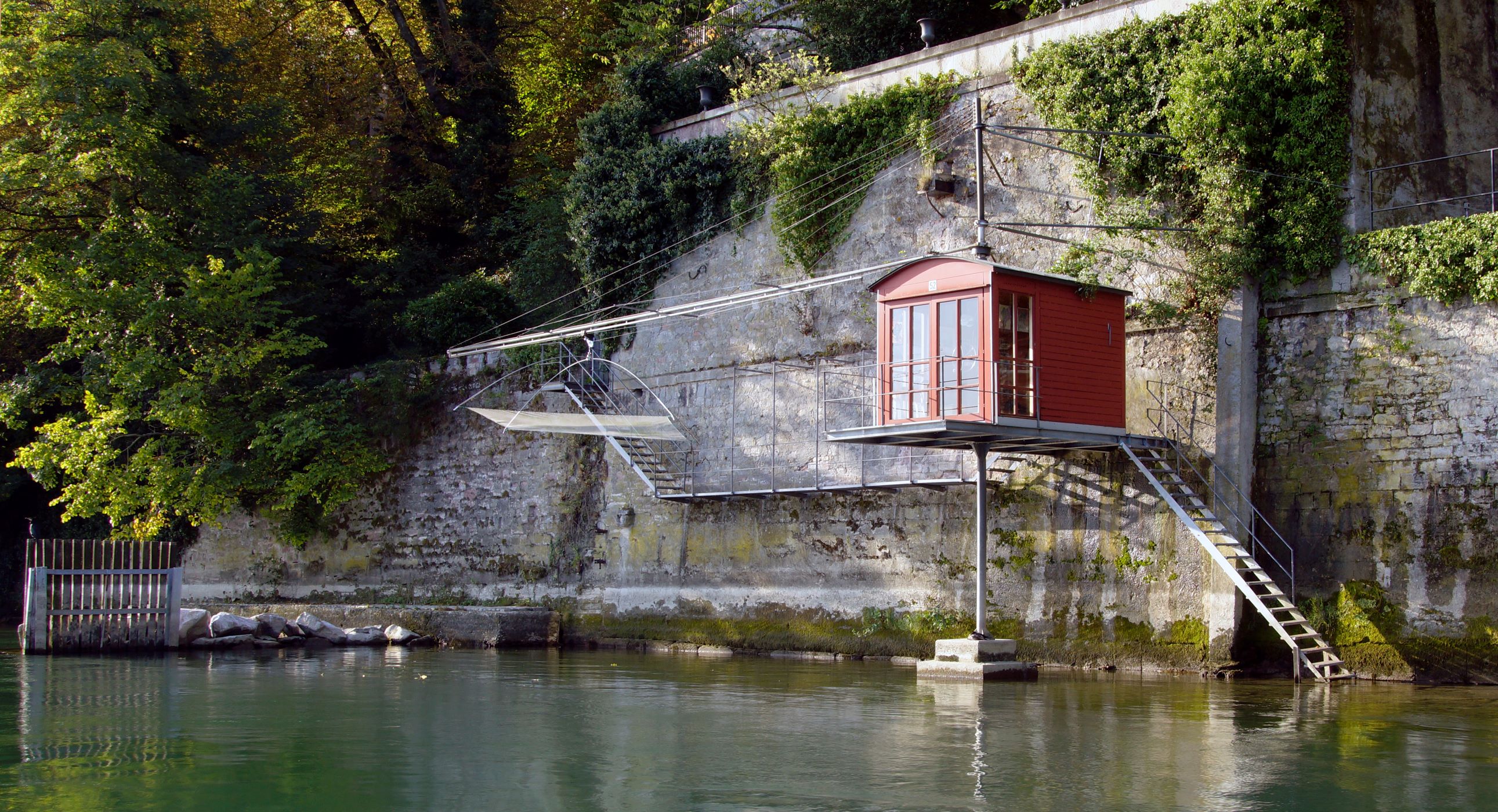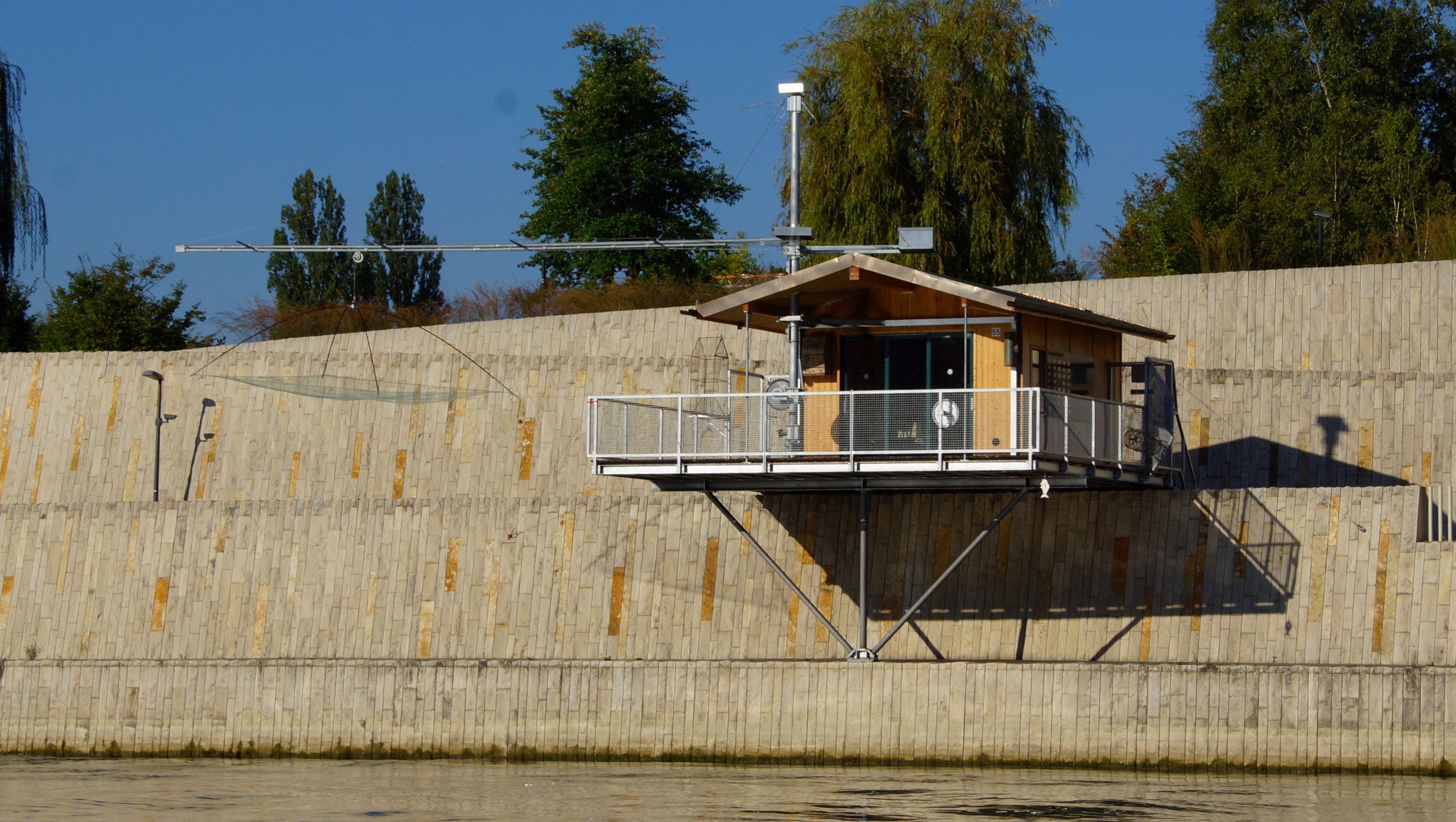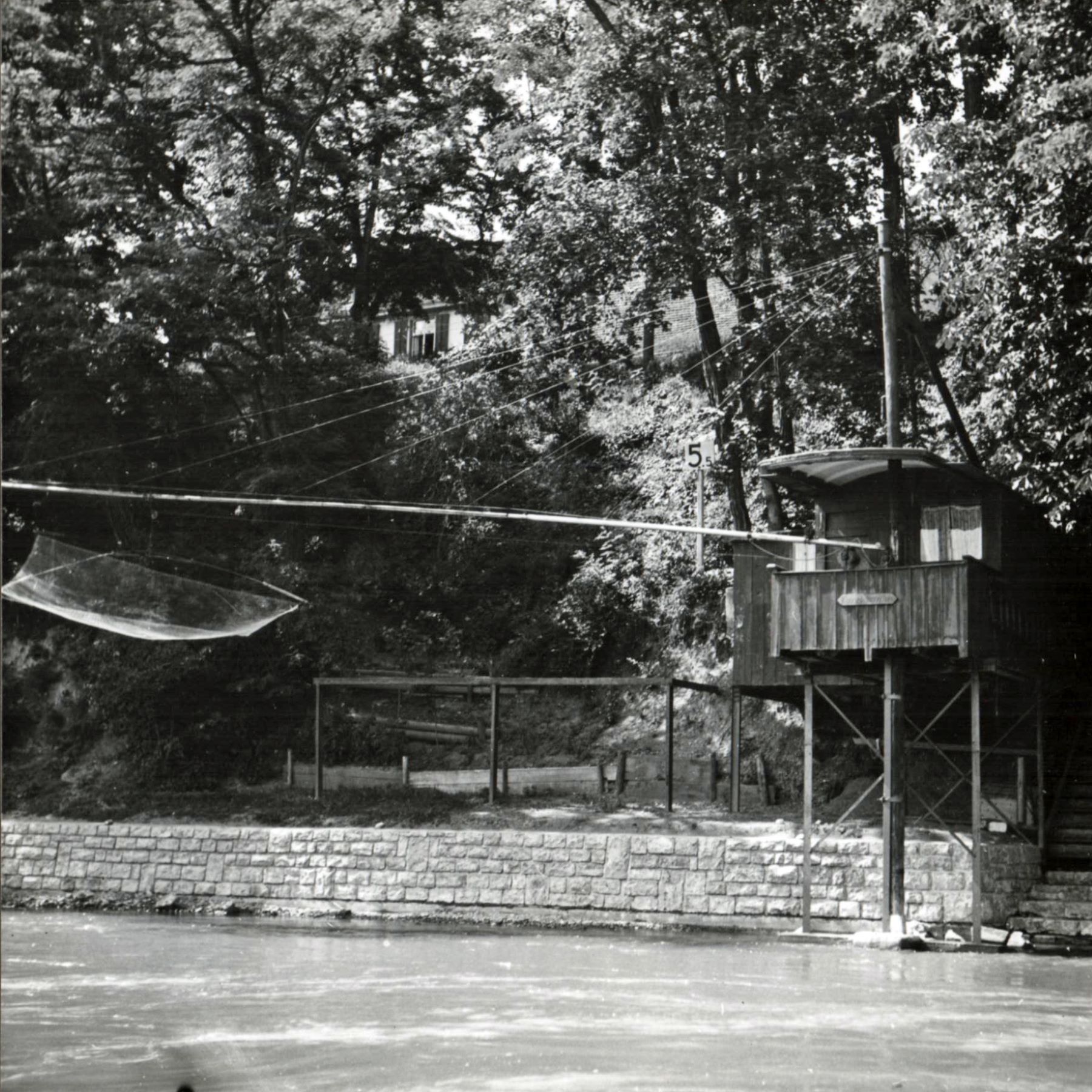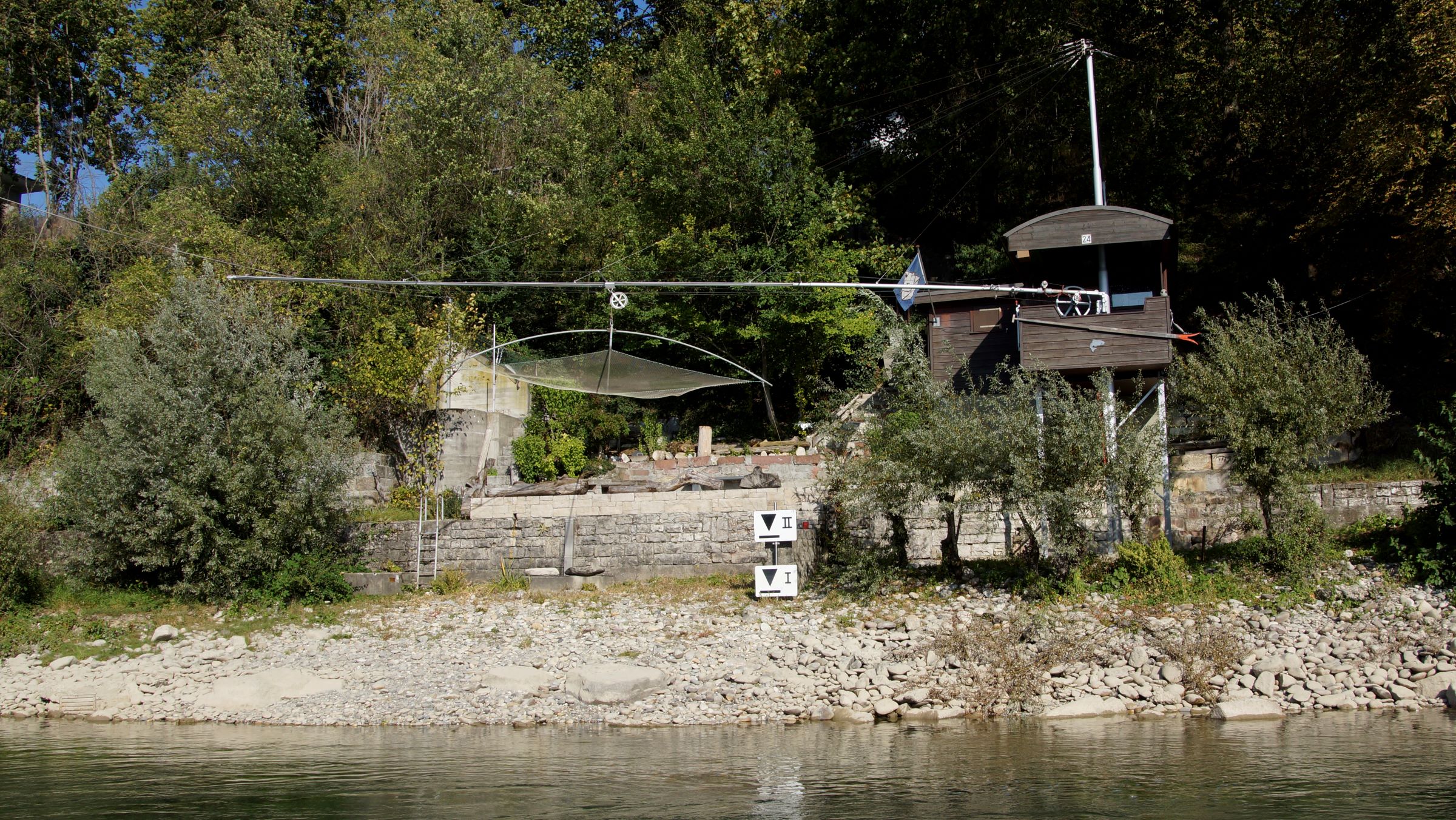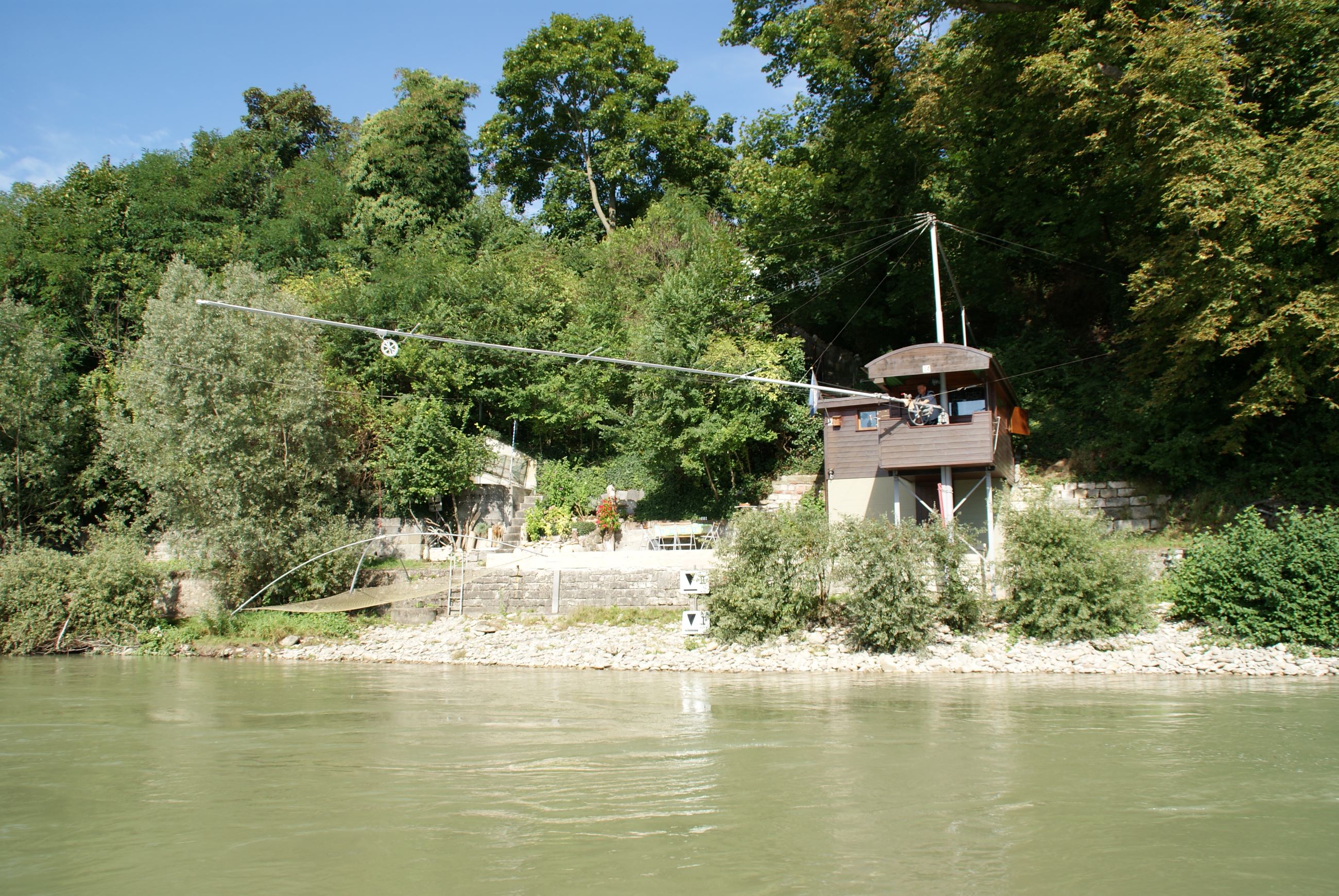Fishing with the use of stationary contraptions started in the Middle Ages. These machines employ a form of fishing that is considered to be especially gentle: a net is lowered into the water near the shore – in a reverse flow area created by a weir – using a crank mechanism. Fish that want to rest during their journey upstream swim directly into these areas. Fishermen can then raise the nets and sort through their catch by species, size and protected status, returning fish to the water uninjured as needed. In this way, the people who own and operate traditional fishing machines contribute to a tradition of sustainable fishing. In the city of Basel, they belong to an association dedicated to maintaining the machines, passing on centuries-old knowledge about fishing in the Rhine and advocating for environmental protection for the local waterways.
Traditional fishing machines are a testament to the earlier significance of fishing for people who lived along the Rhine. They provided an important source of income both for the fishing families who resided there and for the owners of “Fischenzen”, or fishing rights. The springtime “Salm” – an older dialect word for salmon – played an important role here. However, fish populations have dropped sharply due to increasing industrialisation starting in the mid-19th century, the preparation of the Rhine for the passage of large ships and the construction of hydroelectric plants. The last salmon were caught north of Basel in the late 1950s.


